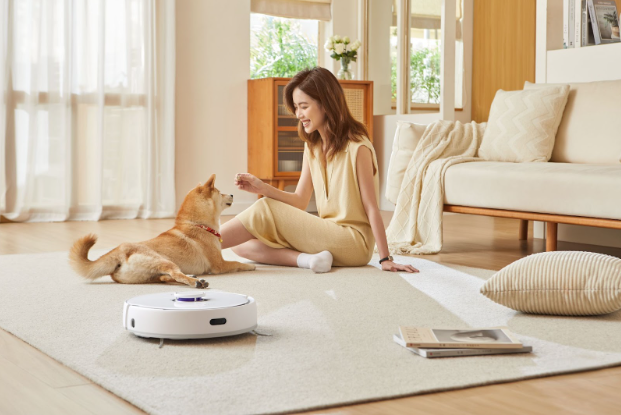Indoor air quality is essential for health and comfort. Many focus on vacuuming and dusting to keep their homes clean. However, a mopping robot can significantly improve air quality by cleaning floors more effectively. These machines go beyond traditional cleaning methods by eliminating dust and allergens that affect the air you breathe.
Reducing Dust and Allergens
Dust, dirt, and allergens often settle on the floor. When people walk on these floors, they stir up particles into the air. Regular mopping is essential to remove these harmful particles. A mopping robot can do this automatically and consistently. It removes fine particles that vacuuming alone might miss. This helps to reduce the amount of dust floating in the air, making it cleaner and safer to breathe.
These devices also target common allergens like pet dander and pollen. For people with allergies or asthma, cleaner floors mean fewer allergens in the air. Over time, using a mopping robot can help reduce symptoms related to poor indoor air quality.
Cutting Down on Chemical Use
Many people use cleaning products that contain harsh chemicals. These chemicals release fumes that can linger in the air, contributing to poor indoor air quality. Some mopping robots are designed to clean floors effectively with just water, which means there is less need for chemical cleaners.
By using water-based cleaning, you can reduce your exposure to harmful substances in the air. Fewer chemicals mean less pollution in your home, which is better for both your health and the environment.
Consistent Cleaning for Better Air Quality
One of the advantages of a mopping robot is its ability to clean regularly. Keeping floors clean on a consistent schedule prevents dirt and dust from accumulating. Manual mopping may be done less often, but a robot can be set to clean daily, keeping floors spotless.
This regular cleaning helps maintain good indoor air quality. Even in high-traffic areas, a mopping robot ensures that dust and dirt are quickly removed. This not only improves the cleanliness of your home but also reduces the particles that could end up in the air.
Ideal for Homes with Pets
Homes with pets are more likely to have poor indoor air quality. Pets shed hair, dander, and track in dirt, which accumulates on the floor. A mopping robot is especially useful in these homes because it can clean up after pets efficiently. This reduces the amount of pet-related allergens in the air.
By cleaning up hair and dander regularly, a mopping robot helps create a healthier environment. This is particularly important for people with allergies to pet fur. Less pet hair and dander on the floor mean fewer allergens in the air.
Enhancing Overall Air Quality
A mopping robot plays an essential role in keeping floors clean, but it also contributes to the overall improvement of air quality in your home. The less dust and dirt on your floors, the fewer particles are available to become airborne. This simple yet effective cleaning method can make a noticeable difference, especially in homes with children, pets, or people with respiratory conditions.
Advanced models use technology that allows them to reach under furniture and into corners, ensuring every part of your floor is cleaned. By removing dirt from these hard-to-reach areas, a mopping robot helps ensure that fewer particles remain to degrade air quality.
Conclusion
A mopping robot is a powerful tool for improving indoor air quality. It removes dust, allergens, and other harmful particles from your floors, preventing them from polluting the air you breathe. With consistent cleaning and reduced need for chemicals, it offers a simple and effective way to keep your home healthier. Investing in a mopping robot can make a significant difference in the cleanliness of your floors and the quality of your air.





